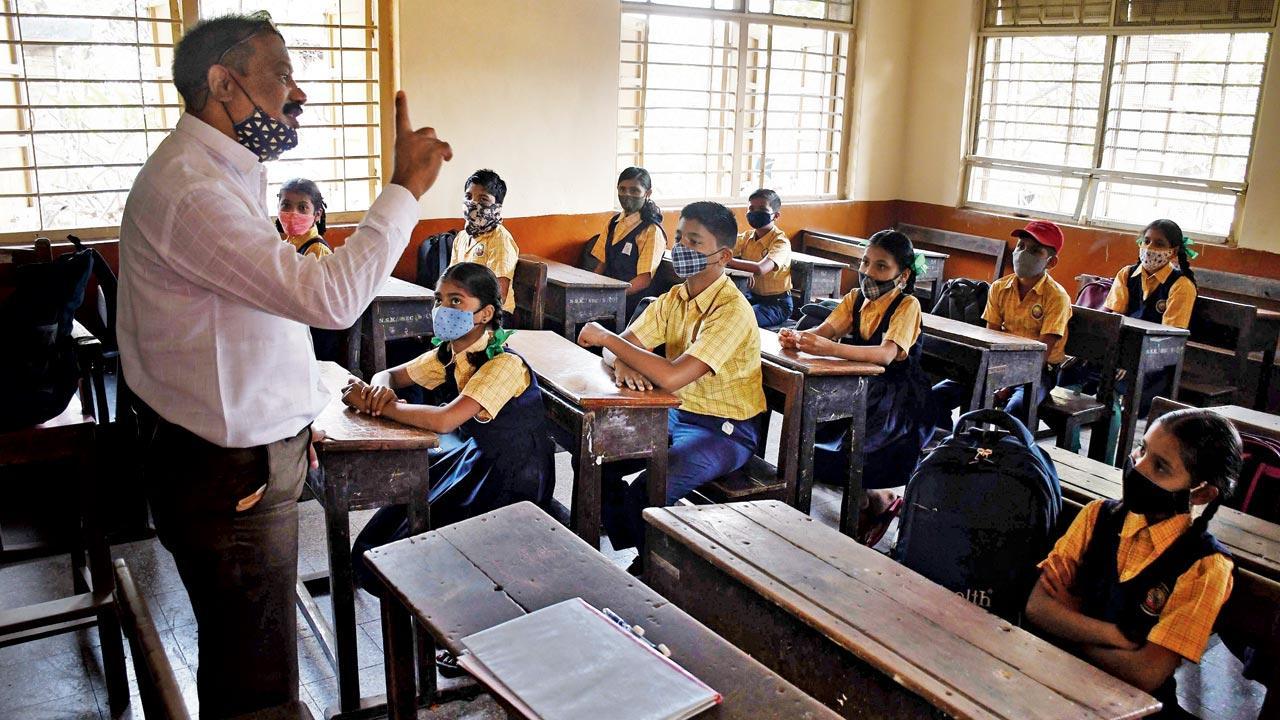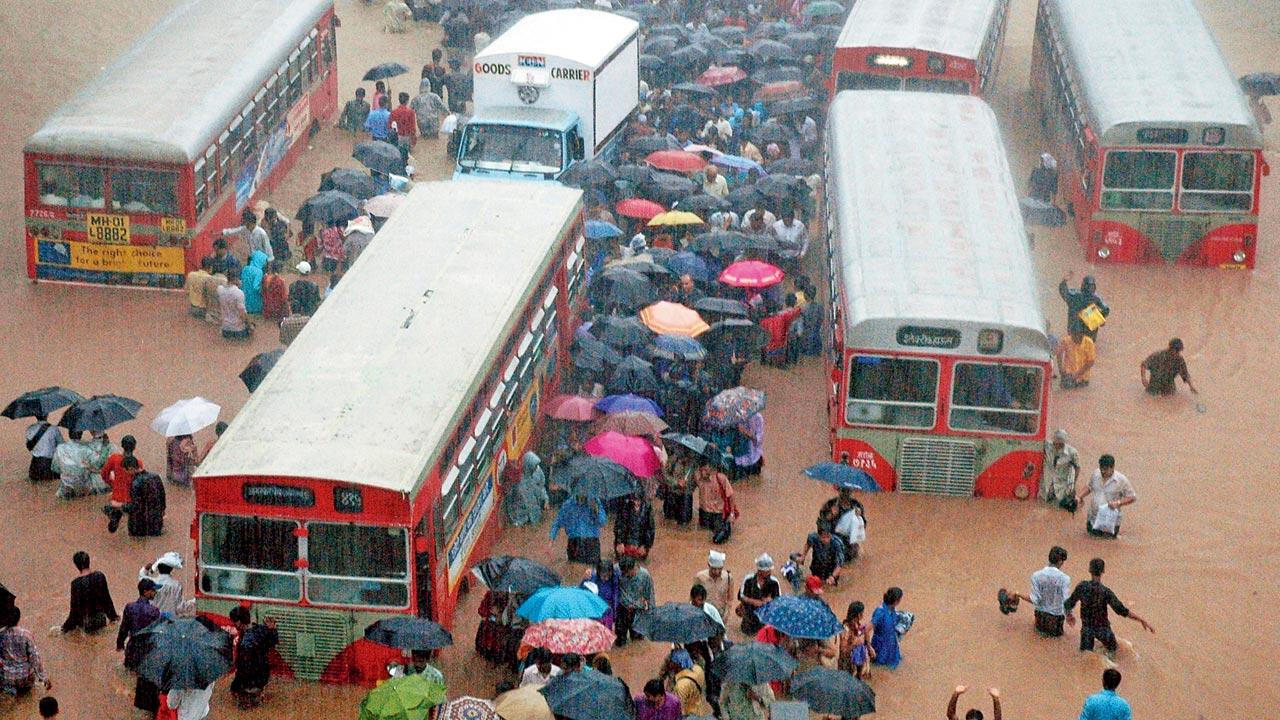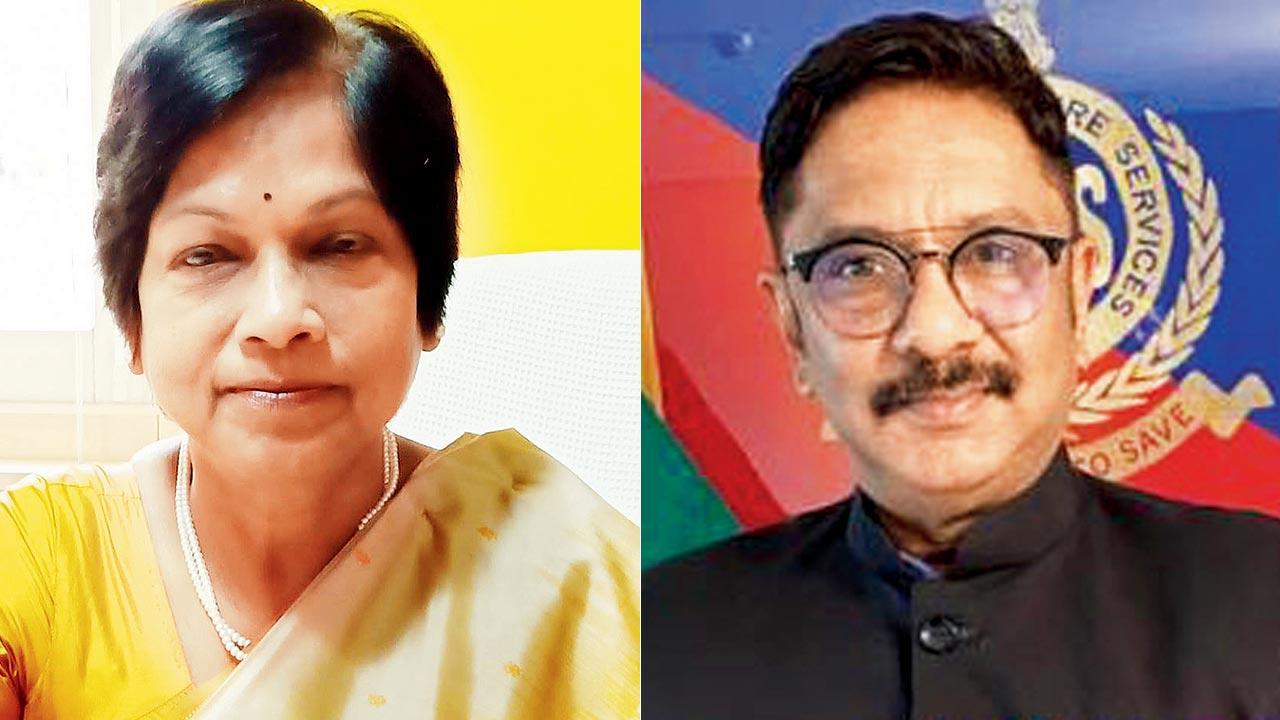Based on Census 2011 and ward level analysis, Greater Mumbai has the highest literacy rate at 81 per cent and the highest female literacy rate at 77.7 per cent in the Mumbai Metropolitan Region or MMR

Students at a BMC school in Wadala on December 15, 2021. File pic
About 99 per cent of Mumbai’s population may have access to a healthcare facility in their vicinity on a normal day, but the accessibility drops to a worrying 64 per cent during floods. Similarly, the access to fire rescue services dips from 79 per cent to 47 per cent during flooding, a perennial problem in the city. These are the findings of a study under the Mumbai Climate Action Plan.
The Mumbai Climate Action Plan (MCAP) study explored the gaps in vulnerability with regard to access to education, healthcare and fire rescue services in case of a climate-induced crisis. With the help of MCAP, Mumbai aims to achieve net-zero emission by 2050.
 A flooded area at Andheri East, a day after the July 26, 2005 disaster. Pic/Ashish Rane
A flooded area at Andheri East, a day after the July 26, 2005 disaster. Pic/Ashish Rane
Access to education
Though the city has a large population of literate people, female literacy is slightly lower in Mumbai. Literacy increases one’s ability to access information, absorb early warnings and respond faster during a crisis or disaster event.
Based on Census 2011 and ward level analysis, Greater Mumbai has the highest literacy rate at 81 per cent and the highest female literacy rate at 77.7 per cent in the Mumbai Metropolitan Region or MMR.
 Basanti Roy, educationist and former secretary of Mumbai division of state board and Prabhat Rahanagdale, former chief fire officer
Basanti Roy, educationist and former secretary of Mumbai division of state board and Prabhat Rahanagdale, former chief fire officer
At least 95.5 per cent of the city population has access to a school within 1 km. The city has 405 aided schools, 710 unaided schools and 1,136 municipal schools. Madh, Andheri East, and Mahul are some of the underserved areas with limited access to schools within 1 km, the MCAP study revealed. For poor families, proximity to educational institutions ensures enrolment, especially for girls.
However, the Maharashtra government’s own data in April 2021 revealed that over 25,000 children remained out of school in the state. Of these, the highest number of students who dropped out (10,820) were from Mumbai.
Basanti Roy, an educationist and former secretary of Mumbai division of state board, said it’s quality of education that matters more. “It is true that more and more schools are coming up in every nook and corner of the city. Quantity is there, but our concern is quality. Whether there are qualified teachers in these schools? BMC schools themselves are shutting down, people are turning to private schools, and those who cannot afford private education are dropping out. So, accessibility might not be an issue, quality education too should have been assessed under MCAP I feel.”
Access to health services
Timely access to medical care is crucial for everyday life as well as during a disaster event. The vulnerability of population concentrations with limited access to health services is exacerbated during heat waves, flooding and landslides, which may lead to higher mortalities or long-term health risks, MCAP has stated.
As per the MCAP report, 98.9 per cent of Mumbai’s population has access to an in-patient healthcare facility within 5 km. Mumbai has 71 government and civic-run hospitals with a total bed count of 18,797. It also has 1,521 private hospitals with a capacity of 34,889 beds. The population-to-bed ratio within the service area is 3.4 beds per 1,000 people.
Madh and Versova are the only areas with limited access to hospitals.
In the event of a flood, the population with easy access to a healthcare drops to 63.9 per cent. Wards C (Kalbadevi, Chandanwadi, Pydhonie, Marine Drive, Chira Bazar) and F/N (Matunga, Wadala) rank the highest as 100 per cent of their population have access to healthcare, but this reduces to 78 per cent and 33 per cent respectively during floods. The drop in access to healthcare can potentially impact timely medical aid, especially for the poorer population.
Moreover, 14.1 per cent of Mumbai’s population doesn’t have access to a healthcare facility within the defined thresholds. They are also exposed to heat stress (when the temperature rises beyond 35 degrees Celsius), exacerbating their vulnerability. G/N Ward (Dharavi, Mahim, Dadar) has the highest percentage of the population (2.5) exposed to such overlapping risks.
Access to rescue services
The majority of Mumbai’s residents are covered by emergency fire services and are within a five-minute response time. Higher access to fire services implies low response time, which reduces vulnerability. Residents of high-density, informal settlements are most at risk during fire emergencies.
According to MCAP’s assessment report, 47.4 per cent of Mumbai’s area which houses 78.6 per cent of the population has access to fire stations within five minutes. Mumbai has 39 fire stations including mini stations. SEEPZ in Andheri, Vikhroli, Kanjurmarg, Khardanda, Borivli West, and Gorai are some of the high-density areas that lie beyond the five-minute response time, found the MCAP study.
The level of access also varies temporally throughout the day based on traffic and road conditions, it said.
In case of floods, the population serviced within a response time of five minutes is potentially reduced from 47.2 per cent. Ward C, which has the most people—100 per cent population—living within a five-minute response time could see that reducing to 78 per cent in case of flooding, thereby increasing vulnerability.
Moreover, 12.9 per cent of the population doesn’t get fire services within five minutes.
Hemant Parab, chief fire officer of Mumbai Fire Brigade, said that they start pre-monsoon preparations to avoid such situations. “We are well aware of the difficulties. Every year, there are floods and waterlogged areas, and some sort of disaster occurs. On a rainy day, response time is longer than on a normal day. As a result, beginning in May each year, we mobilise resources and keep manpower on standby in vulnerable or chronically flooded areas. Six of our boats are stationed in flood-prone areas. We prepare and do our best to deal with these issues during floods, but some things are beyond our control,” said Parab.
Former chief fire officer and deputy municipal commissioner, disaster management, Prabhat Rahanagdale, said, “Natural disasters such as flooding, earthquakes, and cyclones are beyond our control. Flood and climate mitigation efforts will aid in resolving these issues. Yes, as rescuers, all we can do is adapt to these situations and find a way out. The first time I moved a file proposing improvements to flood rescue operations and training during my tenure as CFO, no one took it seriously. However, the situation changed after the July 26, 2005 deluge. Everyone is now taking it seriously. As part of its monsoon preparations, Mumbai Fire Brigade now has rescue boats, kayaks, and jet skis in place.”
21.4 per cent
Population with limited access to fire services
98.1 per cent
Population with access to health care
 Subscribe today by clicking the link and stay updated with the latest news!" Click here!
Subscribe today by clicking the link and stay updated with the latest news!" Click here!










